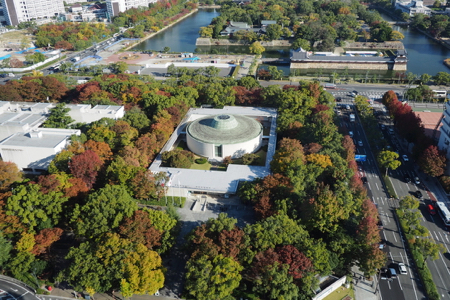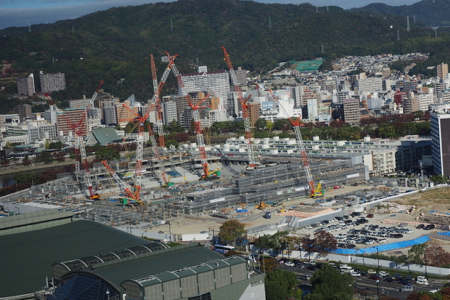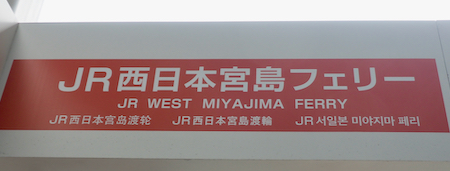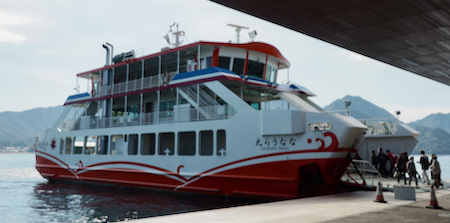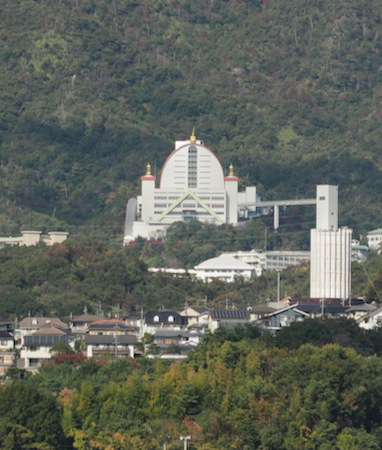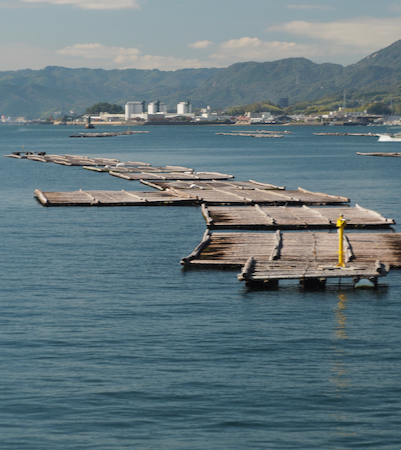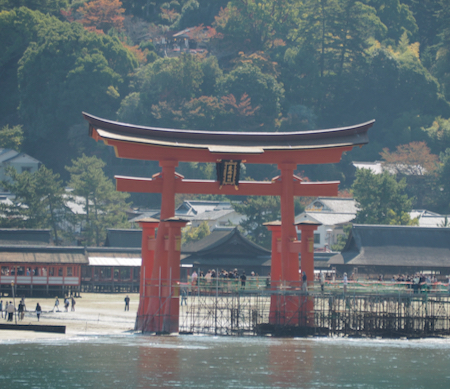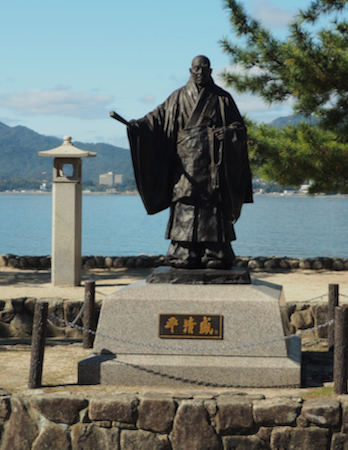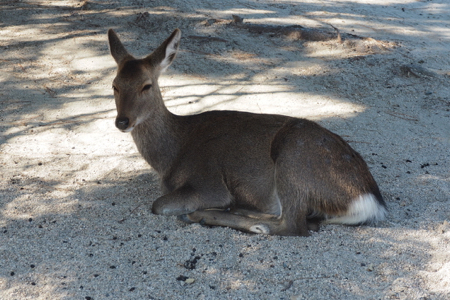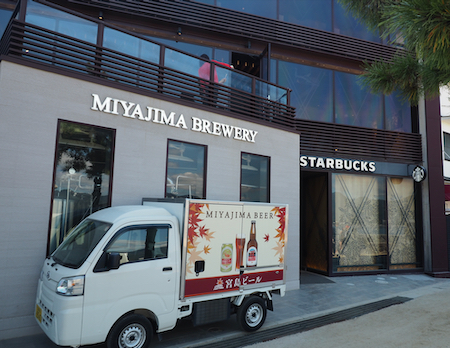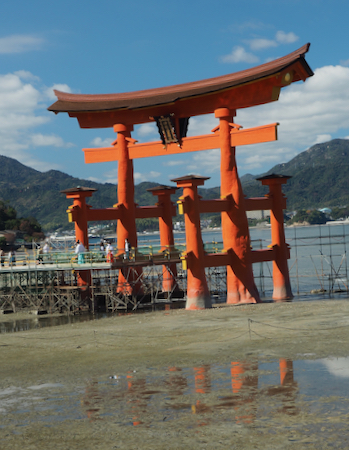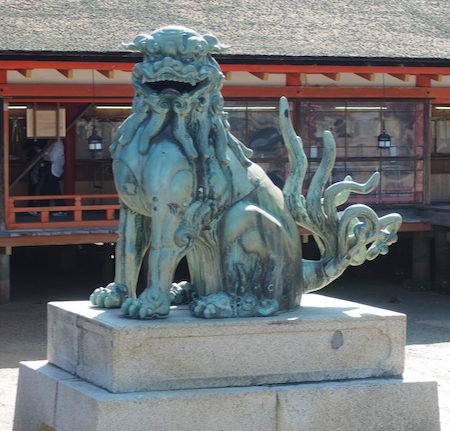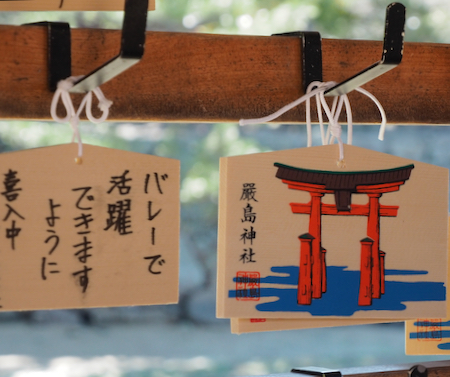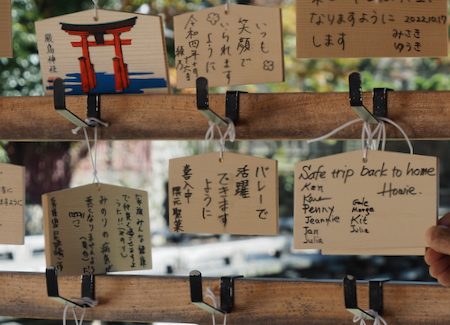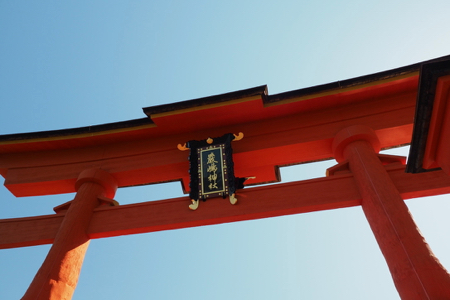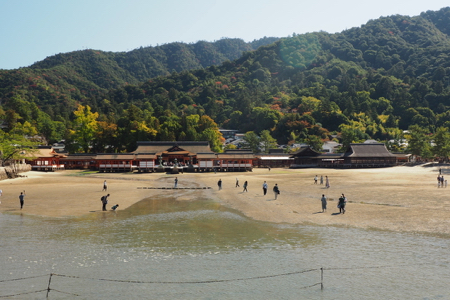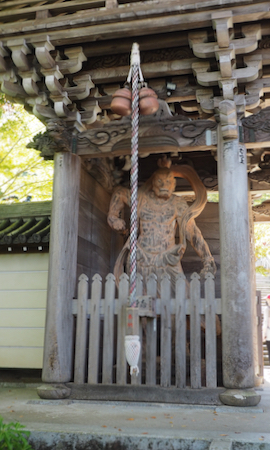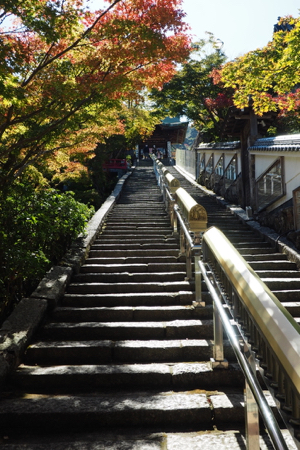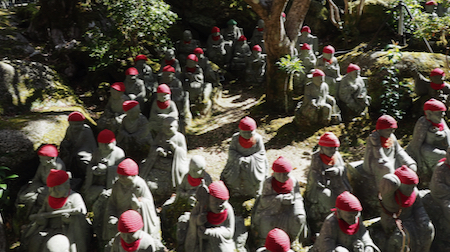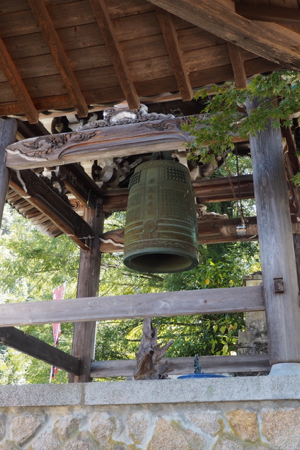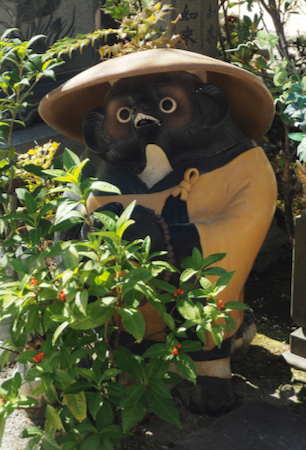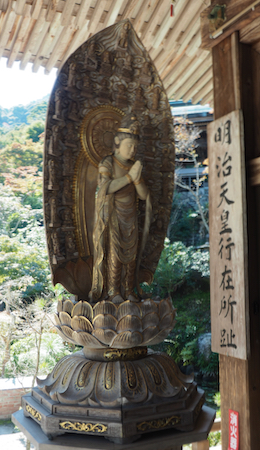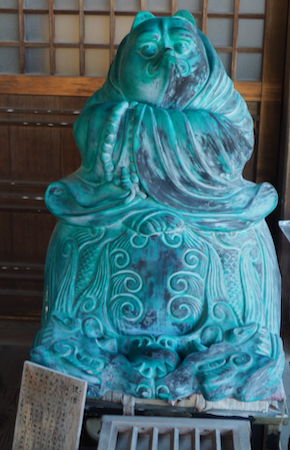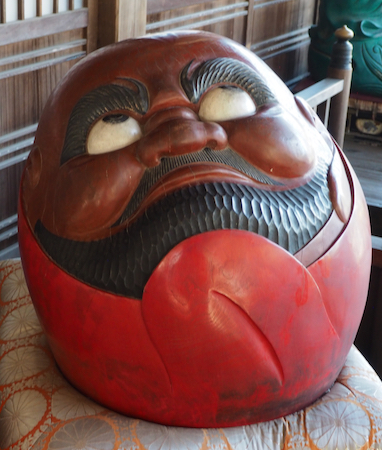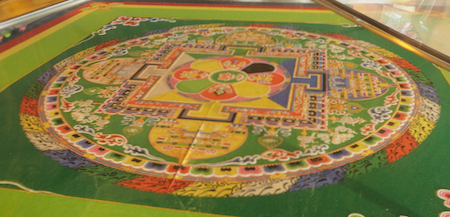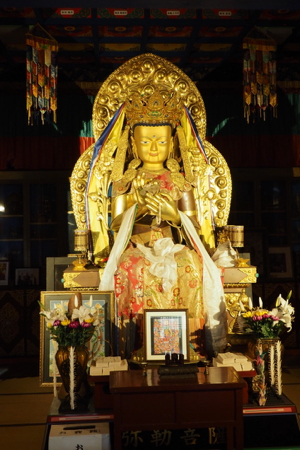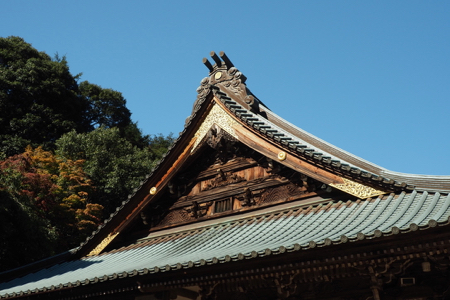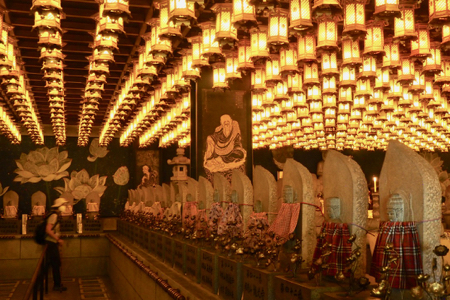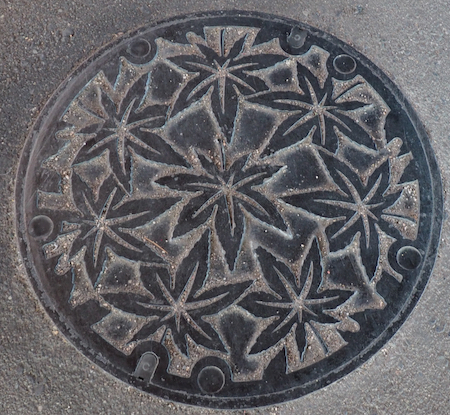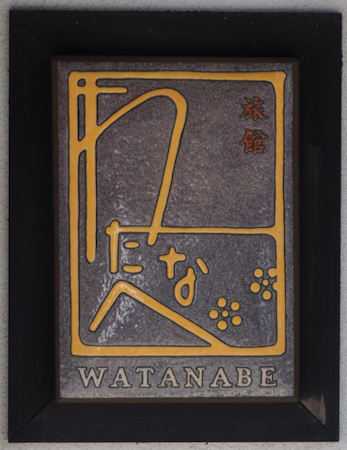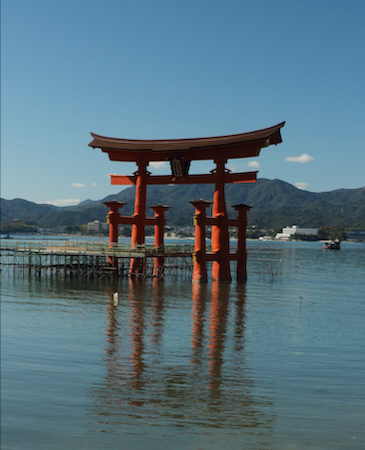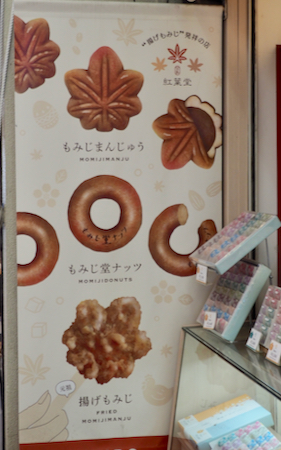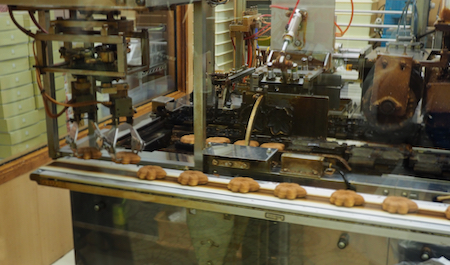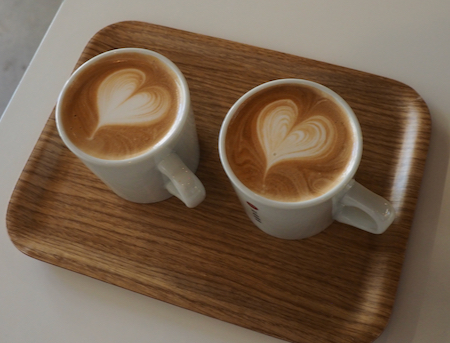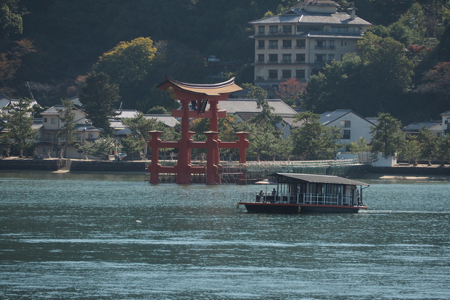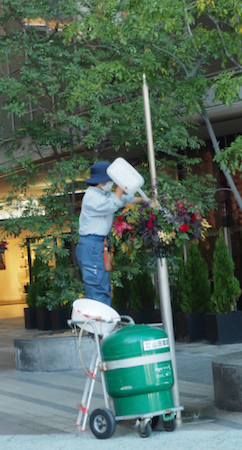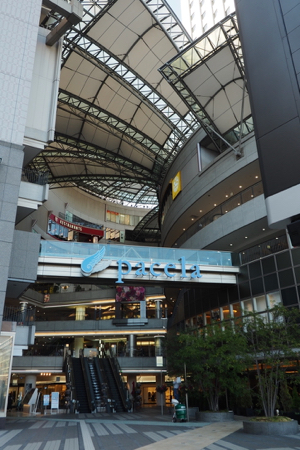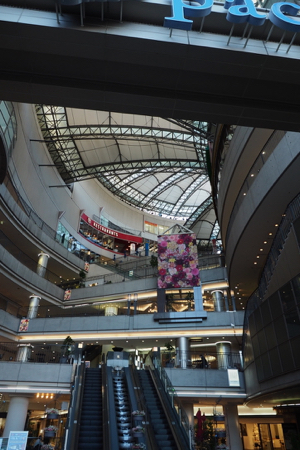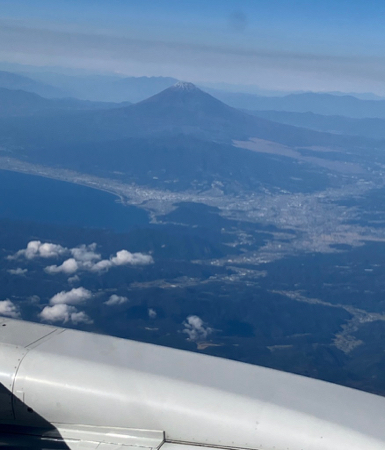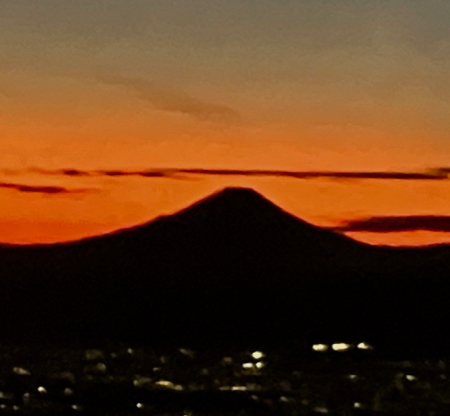Tues., 11/2 - Hiroshima and Miyajima Sacred Island
This morning we rode a trolley/tram for one hour and then took a 10-minute ferry boat ride to Miyajima Sacred Island to visit “one of the three most scenic spots in Japan.” The shrine was designated an UNESCO World Heritage Site in 1996.
The red O-Torii Gate at the site is one of the biggest wooden gates in Japan and it sits in the mud at low tide and in water as the tide fills the bay up to the Shinto Shrine on Miyajima Island. If the conditions are right, the reflections of the red gate, the shrine, and the blue sea and green hills would be beautiful. We were not that fortunate.
View of the Hiroshima Art Museum from our hotel window
Dancing cranes, again
More cute road block figures
Ferry to Miyajima Island
Unification Church (try Google for information)
Oyster farming
Once on the island, the group walked through the Itsukushima Shrine that was first built in 593 CE and then rebuilt in 1168 CE.
We then walked on scaffolding out to the O-Torii gate. The vertical pillars are huge and were originally each one tree trunk.
Statue of Kiyomori Taira - military leader
One of the many residents
Brewery and another little truck
O-Torii gate - tide is out
Lion sculpture
Shinto votive signs
Howie bought us a Shinto votive to sign wishing for a safe trip home
O-Torii gate - detail
Itsukushima Shrine from the O-Torii gate
The Daisho-in Temple is at the foot at the sacred Mount Misen on Miyajima Sacred Island. There are several buildings at the site, a bell, and a garden path with small buddha statues - Rakan. Daisho-in is the most distinguished temple of Miyajima because it was in charge of all the rituals of the Itsukushima Shrine prior to the Meiji Restoration in 1868.
Nio (guardian) statue at the gate
Ritual staircase - we came down but there was another way up
Rakan statues (disciples of Buddha) - every year locals and patrons knit hats and scarves for the statues
Bell at the Daisho-in Temple - it is more than 500 years old
Tanuki - Japanese raccoon dog
Image of one of the Seven Lucky Gods?
Image of one of the Seven Lucky Gods?
Sand mandela created by Buddhist priests visiting from Tibet
Maitreya Bodhisattva
Roof detail
Interior of Henjokutsu Cave
Nice sign
O-Torii gate- tide coming in
Sign for Momiji or maple leaf cookies
Momiji or maple leaf cookies being made
Mochas - we finally sat down and had a mocha and a momiji
The return to the hotel was again the ferry and the trolley. On the way we stopped at one of the underground shopping areas. These are huge and very well maintained. There are very nice stores of all kinds and make walking from place to place easy - no car traffic or signal lights.
Our Farewell Dinner was original traditional Japanese cuisine at Tankuma restaurant.
Taking care of the flowers
Entrance to the mall adjacent to our hotel (on right)
Mall's upper level
Thurs., 11/3 - Hiroshima to Tucson
A limo/taxi drove us to the Hiroshima Airport - a one hour ride - to fly Nippon Air to Haneda Airport outside Tokyo. It was a nice 1 1/2 hour flight. We had four hours to wait at Haneda for our United flight to San Francisco. That flight was 9+ hours and crossed the International Date Line (again) so we arrived in California on the same day that we left Japan. We had 5 hours in San Francisco to go through customs and passport control, but our Global Entry ID made the lines very short. The 2 hour flight to Tucson was smooth until we got near Phoenix. The hot desert air must cause the turbulence because it was quite bumpy for the last 50 minutes of the flight. ArizonaGo (our shuttle service) was waiting for us at the Tucson Airport and drove us home.The trip was very interesting and we learned many new things with excellent tour guides and nice fellow travelers.
Mt. Fuji on the approach to Tokyo
Sunset on Mt. Fuji as we departed Tokyo - the pilot made an extra turn so everyone could see the mountain
| Return to Top | Return to Itinerary | Return to Trips page to view other trips | Return to Dreamcatcher Home Page |
